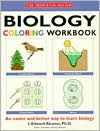What to bring:
- Recent standardized test scores. For Southwest Virginia, that would be current SOL scores.
- Recent paperwork or printout of grades in each subject. Grades are only part of the story. We really like to see the graded homework because it allows us to understand your child's thought process from the first meeting.
- Current Homework Assignments. Your child will be doing their own homework, of course, but this will be guided. We will ask the student how they would solve the problem or answer the question and give them strategies they need to solve it on their own. This is where we start rebuilding self-confidence.
- Binder. If your student is required to keep a binder, let us look at it. Many students are not very well organized and we can help them set up a system that acts in conjunction with the way they learn.
What we do when you arrive:
- Introductions! After a brief introduction to your tutor, the tutor will be working with your child. We look through the materials that you have supplied us with. We will also have activities prepared to gain a deeper understanding of your child's learning style.
- Expect to sign a learning contract and agreement. This is pretty self-explanatory. You are contracting us for a service and this is where the ground rules are set. The contract lists student/parent expectations and what is expected from us, as a business. We will have a copy and you will have a copy.
- Expect recommendations and suggestions from your tutor for the upcoming week. Without the continued support from parents during the week between appointments, your child may forget some of the strategies later in the week. Consistency is important for kids receiving tutoring services. Your child may need us for a short time but they will need you for the rest of their lives.
~From Amanda @LearningConnections
 Football games, cheerleading, music lessons - this is a busy time of the year for parents and their children. Many school systems will be releasing their Interim (or Progress) Reports within the next two weeks. Visit your child's school website for exactly when to expect these reports. While these are not the definitive grades for the first term, they can provide valuable information for parents and set the tone for the school year. Here are a few tips for parents on how to best handle the information:
Football games, cheerleading, music lessons - this is a busy time of the year for parents and their children. Many school systems will be releasing their Interim (or Progress) Reports within the next two weeks. Visit your child's school website for exactly when to expect these reports. While these are not the definitive grades for the first term, they can provide valuable information for parents and set the tone for the school year. Here are a few tips for parents on how to best handle the information:
 I absolutely adore this series from the Princeton Review! It's a great way to add more content to high school and college Biology classrooms! One page is a description of the biological process involving the picture that follows. What an outstanding way to connect verbal intelligence and spatial intelligence! There are many great web resources for coloring pages too! The nice thing about having it in this workbook is that you do not have to hunt for these materials online.
I absolutely adore this series from the Princeton Review! It's a great way to add more content to high school and college Biology classrooms! One page is a description of the biological process involving the picture that follows. What an outstanding way to connect verbal intelligence and spatial intelligence! There are many great web resources for coloring pages too! The nice thing about having it in this workbook is that you do not have to hunt for these materials online. 
